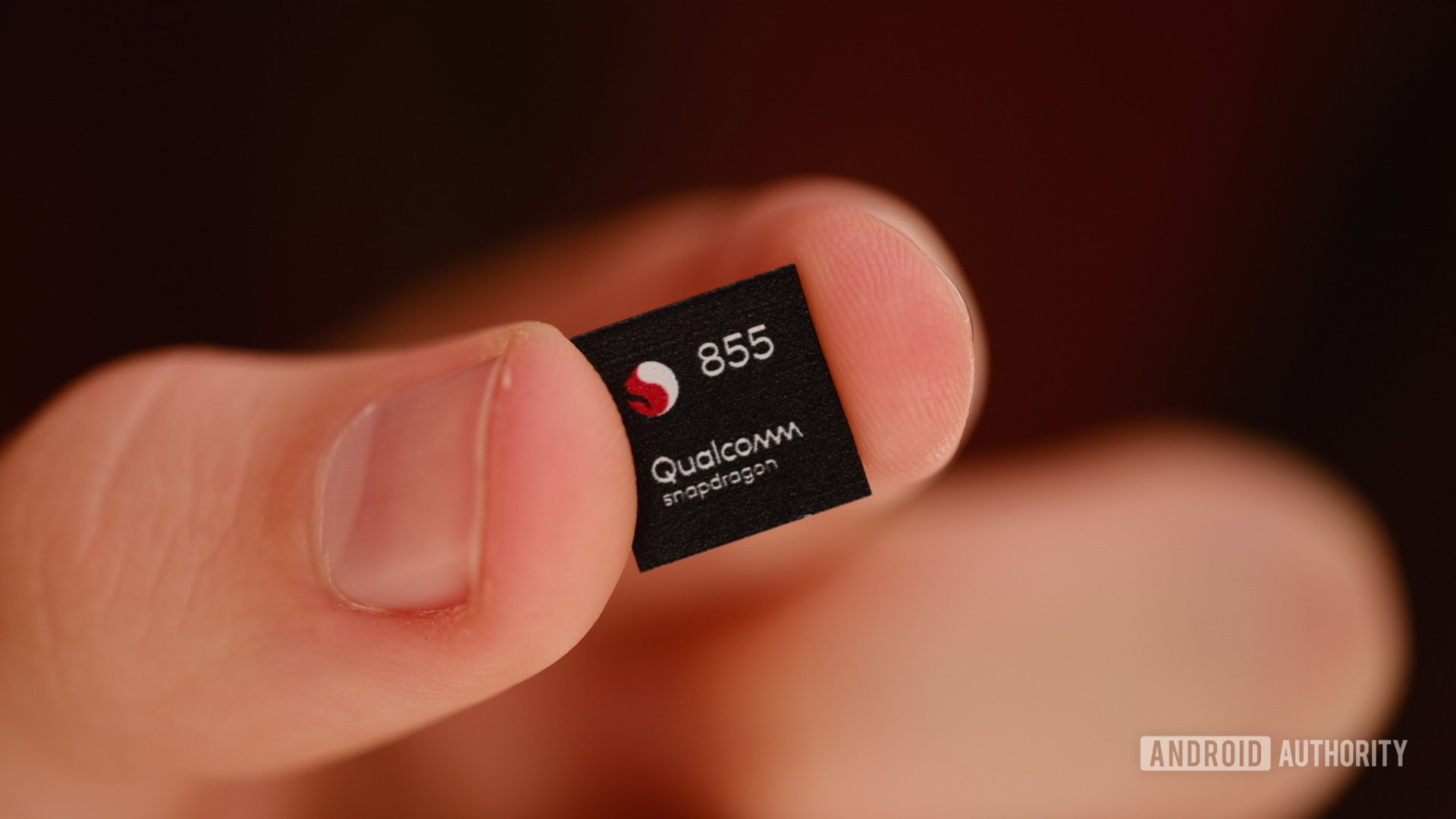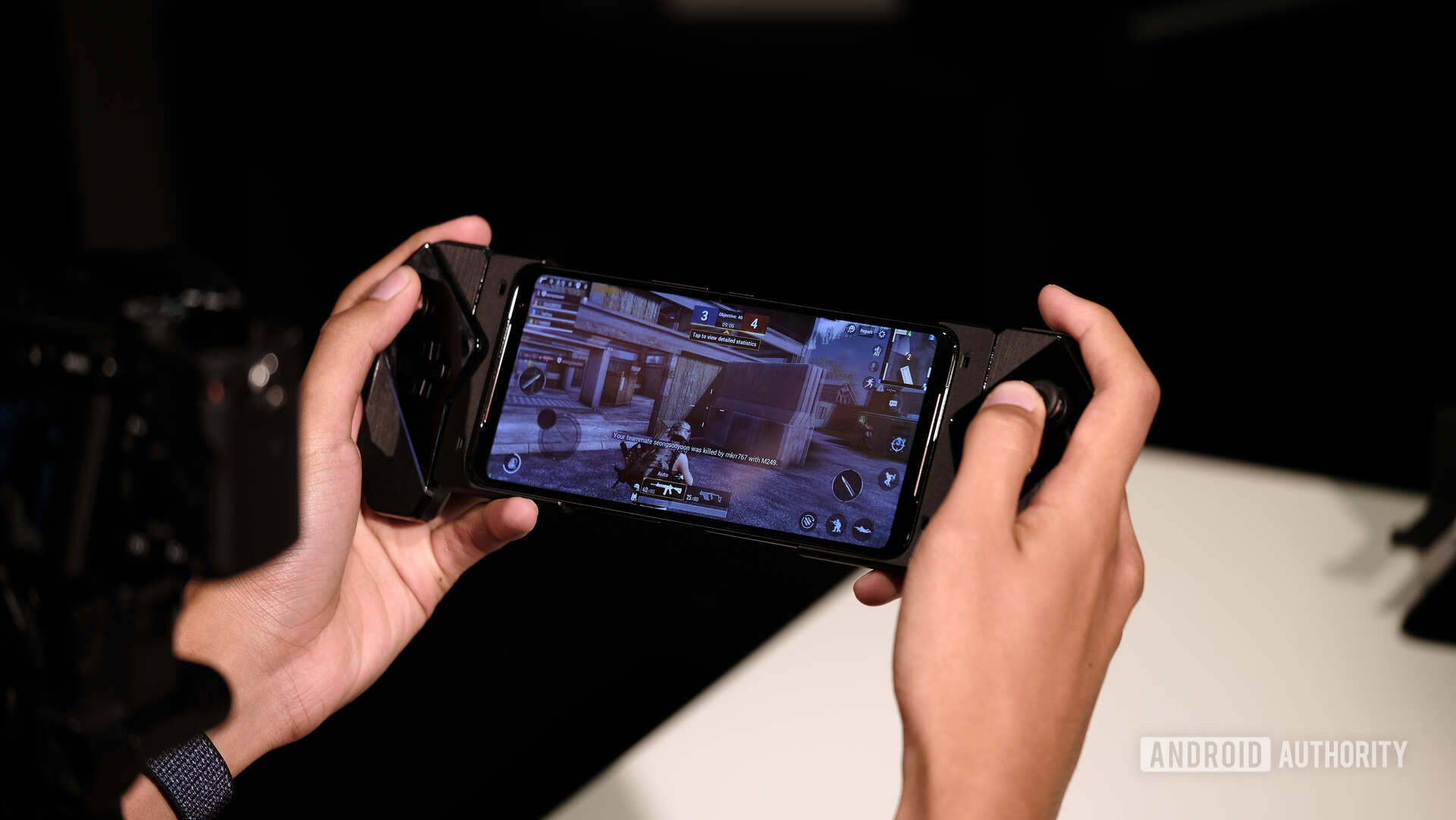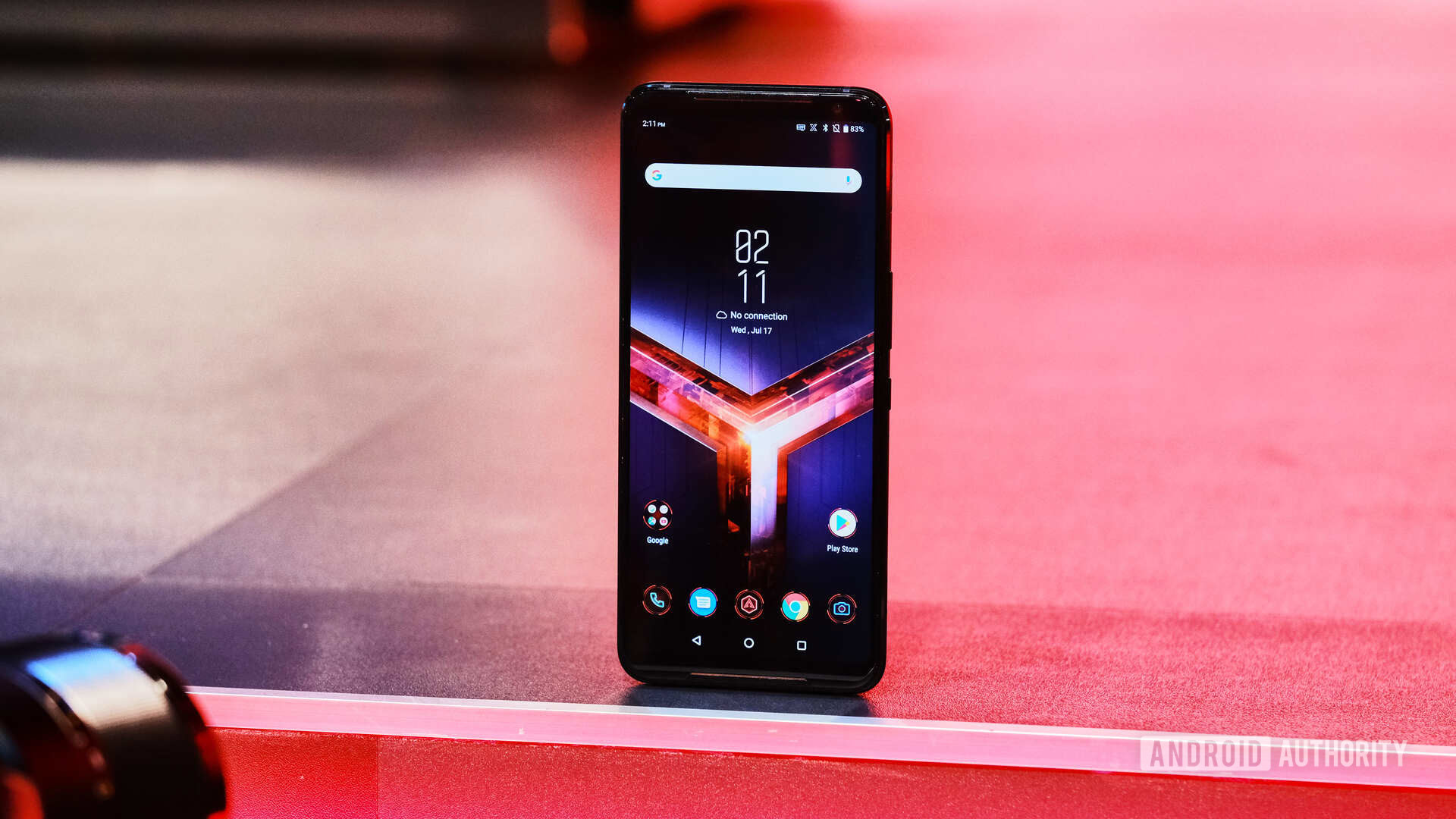Affiliate links on Android Authority may earn us a commission. Learn more.
Should you pick the Snapdragon 855 Plus over the regular 855?

Back in July, Qualcomm announced the Snapdragon 855 Plus – a small update to last year’s flagship Snapdragon 855 chipset. The 855 Plus is primarily targeted at mobile gamers and brings CPU and GPU improvements to elevate the gaming experience. But otherwise, the two chips are identical when it comes to camera, machine learning, and 4G LTE modem capabilities.
Qualcomm is increasingly keen to update its flagship SoC design mid-way through the year. The previous generation also saw the Snapdragon 845 tweaked to create the Snapdragon 850. However, this update was targeted at entry-level laptop class performance rather than smartphones.
Read more: Qualcomm Snapdragon 855 vs 845: Worth the upgrade?
With the first Snapdragon 855 Plus handsets now on the market, we can finally investigate whether Qualcomm’s performance improvements live up to the promises.
Snapdragon 855 vs 855 Plus specs
There aren’t a whole raft of spec changes between these flagship Qualcomm chipsets. Only a couple of clock speed boosts are on offer, suggesting that Qualcomm found a way to eke out a tad more performance by optimizing the Snapdragon 855’s design.
| Snapdragon 855 Plus | Snapdragon 855 | |
|---|---|---|
CPU | Snapdragon 855 Plus 1x Kryo 485 Gold (A76-based) @ 2.96GHz 3x Kryo 485 Gold (A76-based) @ 2.42GHz 4x Kryo 485 Silver (A55-based) @ 1.80GHz | Snapdragon 855 1x Kryo 485 Gold (A76-based) @ 2.84GHz 3x Kryo 485 Gold (A76-based) @ 2.42GHz 4x Kryo 485 Silver (A55-based) @ 1.80GHz |
GPU | Snapdragon 855 Plus Adreno 640 @ 672MHz (estimated) | Snapdragon 855 Adreno 640 @ 585MHz |
RAM | Snapdragon 855 Plus 4x 16-bit channels @ 2133MHz LPDDR4x 34.1GB/s | Snapdragon 855 4x 16-bit channels @ 2133MHz LPDDR4x 34.1GB/s |
Modem | Snapdragon 855 Plus Snapdragon X24 LTE 2000Mbps download, 316Mbps upload | Snapdragon 855 Snapdragon X24 LTE 2000Mbps download, 316Mbps upload |
Process | Snapdragon 855 Plus 7nm FinFET | Snapdragon 855 7nm FinFET |
There’s a 4.2% clock speed boost to the single large Kryo 485 Gold CPU core. Speeds now tap out at 2.96GHz, up from 2.85GHz. This should provide a small jump in single-threaded performance and could help out with gaming applications, which is where the bulk of the Snapdragon 855 Plus improvement are targeted.
By far the bigger change is a 15% boost to GPU rendering performance. Qualcomm hasn’t listed the new Adreno 640’s clock speed, but an extrapolation from the Snapdragon 855’s 585MHz clock puts it in the region of 672MHz. RAM, LTE modem, and Hexagon DSP capabilities are all unchanged between the two chipsets.
Snapdragon 855 Plus benchmarks
As part of our smartphone review process, we meticulously test against a range of the most popular benchmarks around. Now that the first Snapdragon 855 Plus handsets are on the market, we’ve been able to test how they perform against existing Snapdragon 855 models. The result below showcase how the new OnePlus 7T and ASUS ROG Phone 2 perform in both CPU and GPU tasks. We’ll start by looking at the CPU results.
CPU Benchmarks
GeekBench 4 sees a roughly 4.5% increase in single-core performance between the two chipsets across our test handsets. That’s basically bang-on our projection for the 855 Plus’ clock speed boost. It’s a modest performance gain on paper, but nothing that’s going to make a night and day difference when running apps.
Multi-core performance shows much smaller gains. There’s just a 0.5% average performance advantage for the Snapdragon 855 Plus, which is within margin of error territory. Most CPU clock speeds are basically the same between the two models, so this result is to be expected.
Overall, Qualcomm has made some small improvements to the Snapdragon 855 Plus’ CPU performance. However, these changes don’t amount to anything that’s going to make a major difference in everyday performance. So what about the promised 15% graphics rendering performance boost and Snapdragon Elite Gaming?
GPU Benchmarks
With the GPU, we see a much more profound difference in performance between the Snapdragon 855 and the Snapdragon 855 Plus. 3DMark, a general overview of GPU performance, showcases a 13.5% uplift in capabilities. That’s pretty close to Qualcomm’s estimated 15% performance gain and can certainly make a noticeable difference to frame rates in high-end games.
Switching over to GFXBench shows the most important story though – the Snapdragon 855 Plus is much better for high-frame-rate games and displays. Most smartphone displays are still capped to 60Hz and the regular Snapdragon 855 already caps out these popular benchmarks at 60fps. You won’t see much of a benefit moving to the Snapdragon 855 Plus with 60Hz phones, other than perhaps more consistent frame rate lock at 60fps and smoother frame rates in very demanding titles. However, 90Hz and 120Hz displays can make much better use of the 855 Plus’ extra power.
A locked 120Hz is out of reach for the most demanding mobile games, but the Snapdragon 855 Plus is a great fit to power 90Hz displays.
Note how the 90Hz nubia REDMAGIC 3 hits its 90fps cap in GFXBench’s T-Rex, but falls just short with 85fps in Manhattan. That’s still an impressive result but suggests the 855 can’t quite lock in a solid 90fps on more demanding games. By comparison, the 120Hz ASUS ROG Phone II clocks in 120fps on T-Rex and 98fps in Manhattan. If this chip powered the REDMAGIC 3, the phone would be able to hit its 90Hz display target more often. A locked 120Hz is still just out of reach for the most demanding mobile games, but the Snapdragon 855 Plus looks like a great fit to power phones with a 90Hz display.
Making the most of the Snapdragon 855 Plus

The biggest advantage on offer with the Snapdragon 855 Plus is in the gaming department, thanks to an up-clocked Adreno 640 GPU. However, most standard Snapdragon 855 handsets can already lock a solid 60 frames per second on popular games and benchmarks. The extra performance of the Snapdragon 855 Plus will certainly help keep frame rates stable and push graphics settings up to the limit. However, you’re probably wasting most of the Snapdragon 855 Plus’ potential with a 60Hz smartphone display.
With marginal CPU gains, the Snapdragon 855 Plus is purely a gaming-focused upgrade.

With that in mind, we’d only really recommend making a purchasing decision based on the Snapdragon 855 Plus if you’re looking at a phone with a 90Hz or 120Hz display. The ASUS ROG Phone 2 is a prime example of such a handset than maximizes the benefits of the chip. However, you’ll also want to play gaming titles that can hit these higher refresh rates. Compatibility is growing, however, a good deal of games on the market are still capped at the standard 60fps. So again, you won’t always see a difference between the two Snapdragon 855 variants.
We will likely see a lot more 90Hz smartphones and games hit the market later this year and into 2020. For now, there’s no need to rush out and buy a Snapdragon 855 Plus phone given the current limits on frame rates. Furthermore, there’ll be a new high-end Snapdragon SoC launching in flagship devices early next year.